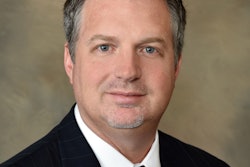
For most dentists, the credentialing process must feel like the 1993 movie "Groundhog Day" and they are Bill Murray's character Phil.
Your office receives a multiple-page application that must be filled out in order to add the provider to the payor's dental network. The dentist or a staff member then dutifully fills out the application, attaches appropriate items, and mails it back, or submits it online in the more progressive instances. Next week, another application comes in asking for the exact same information, and the office goes through the process again. Rinse and repeat for each payor's dental network.
 Mike Lessila is the director of business development for Skygen USA. Image courtesy of Skygen USA.
Mike Lessila is the director of business development for Skygen USA. Image courtesy of Skygen USA.That system might have been acceptable in the 20th century, when dental claims processing and benefits management were manual, offline processes. But here in the 21st century, submitting provider credentialing one payor at a time and then repeating the process year after year seems rather archaic.
Think about the process you go through to look for a new car. If you have your eye on a particular make and model and want to find out which car dealers in your area have it on the lot, and at what price, you don't have to visit each dealer in person or even contact each dealer individually.
Instead, you can simply fill out a single online form, and 20 minutes or so later your email inbox will explode and your phone will be ringing incessantly with dealer calls. It's simple and convenient, requiring minimal effort on your part to receive the maximum benefit.
That's the way dental credentialing should work as well. Every payor asks for the same basic information. Sure, there may be one or two items specific to a particular payor, but for the most part filling out the application is Groundhog Day.
A centralized solution
There is no easy away around the tediousness either. If the application is on paper, someone must complete each section in every application one at a time. Sure, you can make a copy of the previous application so most of the information is readily available, but it still must be copied over by hand -- like medieval monks making copies of the Bible and other important documents -- only without the detailed illustrations.
Online applications in use today don't fare much better. They typically are confusing to use (that is, they apparently have not had much thought put into them) or are asking dentists to complete the same credentialing application as other specialists in the healthcare industry, such as physicians or ophthalmologists. This introduces more lengthy applications and forces the dentist to read through questions and requests that have absolutely nothing to do with dentistry. This is not only confusing but can defeat the purpose of an online solution. In the internet age, trying to be all things to all people is a very tough task, and it usually does not work very well.
“Wouldn't it make more sense for the industry to create a centralized credentialing website?”
Wouldn't it make more sense for the industry to create a centralized credentialing website where dentists enter their information once, keep it up to date as things change, and then payors download the information on demand? Of course it would.
Centralized credentialing has many benefits. Dentists would realize significant time and cost savings by not having to complete a new application for every payor and not having to pay a staff member (or taking up their own billable time) entering and re-entering the same information. That time could then be dedicated to serving patients instead or simply working fewer hours.
Payors would save significant time and money as well because they wouldn't have to chase down dental providers one by one to add them to the network or recredential them every three years. Instead they could obtain all the information they need from a credentialing database, taking a process that normally requires weeks or months to complete and reducing it to a few hours -- or even minutes.
Speeding up this process would also enable dentists to become part of the network faster, because payors wouldn't have to wait for applications to be filled out and returned, and they wouldn't have to go back for missing information. As a result, members would have more complete access to quality dental care in a timely manner.
Finally, centralized credentialing would also eliminate the issue of data errors on submissions, since dentists are not filling out a new application each time. Once it's correct in the database, it's correct until something changes on the dentist's end.
"Groundhog Day" is a fun movie to watch. But it's not so much fun to live it. It's time to use technology to move dental credentialing into the 21st century.
What do you think of this idea? If you're a dentist, how much time would it save a week or a month? If you're a payor, would you rather chase down each dentist individually or be able to go to a centralized credentialing center? How much time and money could you save by adopting this process? Leave your comments below.
Mike Lessila is the director of business development for Skygen USA. He can be reached at [email protected].
The comments and observations expressed herein do not necessarily reflect the opinions of DrBicuspid.com, nor should they be construed as an endorsement or admonishment of any particular idea, vendor, or organization.



















